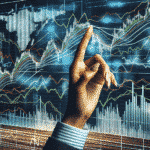
Support and Resistance Levels

We are searched for by such words


The Evolution of Currency Trading
Throughout human history, the foreign exchange market (Forex Market) has played a pivotal role in shaping economic connections between nations.
Ancient civilizations in the East exchanged goods and services long before the advent of structured monetary systems, but as societies evolved, the concept of currency trading began to take shape.
In the Middle Ages, the rise of international banking institutions facilitated more formal methods of exchanging currencies, paving the way for what we now identify as the Forex market.
During these early periods, various forms of money—ranging from precious metals to rudimentary coins—were used to facilitate commerce.
Trade routes across continents ensured that merchants and bankers needed reliable means to value one currency against another.
While the scale of currency trading was far smaller and less complex than it is today, its fundamental purpose—exchanging one form of money for another—was already firmly established.
Over time, global exploration, colonization, and the pursuit of wealth led to an even more intricate web of foreign exchange relationships.
By the 19th century, financial centers like London were paramount in defining exchange rates, with the British pound taking on a crucial role as a global currency.
It set the stage for a system where nations engaged in buying and selling currencies to stabilize their economies, fund international projects, and manage foreign debts.
The Modern Forex Market
The modern Forex market, as we know it, began to crystallize in the 20th century.
This evolution was characterized by a move from fixed exchange rates and heavy governmental controls to more flexible, market-driven rates determined by supply and demand.
Until the mid-1930s, England served as the global financial epicenter, dominating not just trade but also the exchange of currencies.
The British pound, commonly known as “cable” due to its transmission via transatlantic telegraph cables, was a major settlement and reserve currency.
In 1930, a bank in Basel, Switzerland, the Bank for International Settlements (BIS), was established to oversee financial activities among sovereign states, ensuring smoother transitions and temporary financial support when needed.
As global markets matured, more countries demanded input into the rules and frameworks guiding international currency exchange.
The increasing volume of cross-border trade, aided by technological advancements such as telegraphs and later telephones, meant that foreign exchange had to adapt, innovate, and become more efficient.
Eventually, as world events reshaped economic structures, the Forex market took on its current form, marked by floating exchange rates, continuous trading, and a global network of participants ranging from central banks to individual retail traders.
Today, this dynamic environment is accessible through sophisticated online platforms, including MetaTrader (MetaTrader), which revolutionized the way individual traders participate in the Forex market.
The interplay of market forces and technological innovation ensures that the modern Forex landscape remains one of the most liquid, accessible, and influential financial arenas in the world.
Post-War Economic Shifts
In the aftermath of World War II, the global economic order underwent a dramatic transformation.
The British economy, once a bulwark of international finance, was severely damaged, reducing the British pound’s capacity to serve as the world’s primary reserve currency.
The United States, having emerged relatively unscathed, rose to prominence, and the US dollar supplanted the British pound as the leading global currency.
This shift had profound implications.
From the late 1940s onward, most other currencies were valued primarily against the US dollar, anchoring the new global monetary order.
Governments around the world looked to the US dollar as a benchmark, influencing trade policies, foreign investments, and international lending.
The era of dollar dominance gave rise to new financial institutions and agreements designed to maintain stability, promote growth, and prevent economic turmoil.
As American economic influence spread, so did the complexity and interconnectedness of the global Forex market.
Policymakers faced new challenges, balancing national interests with the broader goal of maintaining stable exchange rates and healthy international trade flows.
Significant Events Shaping the Forex Market
The Forex market didn’t evolve in isolation; it was molded by a series of landmark events.
Among the most critical milestones were:
- The Bretton Woods Agreements
- The emergence of floating exchange rates
- The formation of foreign exchange reserves
- The creation of the International Monetary Fund (IMF)
- The establishment of the European Monetary Union and the European Monetary Cooperation Fund
Each of these milestones contributed to the operational mechanics, regulatory frameworks, and economic philosophies that govern today’s Forex trading environment.
They also influenced how traders, investors, and policymakers approach risk management, currency valuation, and the pursuit of economic stability.
The Bretton Woods Agreement
In 1944, as World War II still raged, representatives from the United States, Britain, and France convened in Bretton Woods, New Hampshire, to forge a new international financial order.
The resulting Bretton Woods Agreement aimed to stabilize currencies through structured government controls and to establish a framework that would prevent the economic chaos seen in the interwar period.
Under this system, major world currencies were pegged to the US dollar, which in turn was tied to gold at $35 per ounce.
This arrangement provided a reference point, reducing the volatility that had previously plagued international markets.
The Bretton Woods Agreement also led to the creation of the International Monetary Fund (IMF), an institution tasked with maintaining currency stability and offering financial support to member nations in times of need.
It was a bold experiment in global economic cooperation, forging a system that would last for nearly three decades.
However, by the early 1970s, pressure on the US dollar and growing global imbalances led to the collapse of the Bretton Woods system.
Nations shifted toward floating exchange rates, a move that reshaped the Forex market into the dynamic, decentralized network we know today.
“The Bretton Woods Agreement stands as one of the most significant turning points in global financial history, setting the stage for modern economic governance and international monetary cooperation.”
The Role of the IMF
The International Monetary Fund (IMF) was born out of the realization that stable economic growth and healthy trade relationships depend on reliable mechanisms for financial assistance and oversight.
From its inception, the IMF focused on:
- Fostering international cooperation and trade
- Maintaining exchange rate stability
- Developing a multilateral system of international payments
- Ensuring the availability of financial resources
To achieve these objectives, the IMF employed various financial tools, including reserve tranches, credit lines, and stand-by arrangements.
By the late 1970s, the IMF began embracing the concept of floating exchange rates, recognizing that constant governmental intervention could stifle the natural market forces of supply and demand.
This shift enabled currencies to fluctuate freely, responding to economic indicators, geopolitical events, and shifts in investor sentiment.
Under this regime, the Forex market became more agile, responsive, and inclusive, welcoming not just governments and financial institutions, but also corporations, hedge funds, and retail traders.
Today, the IMF continues to play a vital role in the global economy, offering policy advice, financial assistance, and data analysis that informs both regional and international decision-making.
Foreign Exchange Reserves
In an increasingly interconnected world, foreign exchange reserves serve as a lifeline for nations, buffering against economic shocks, political instability, and currency volatility.
Historically, the US dollar dominated as the primary reserve currency, reflecting America’s economic might and political influence.
However, over time, other currencies gained significance.
The euro and the Japanese yen emerged as viable alternatives, while the Swiss franc sometimes played a role, especially during turbulent market conditions.
Nations diversify their reserves to reduce reliance on a single currency and to hedge against shifts in the global economic landscape.
In this way, foreign exchange reserves can influence the Forex market as central banks buy and sell currencies to maintain desired levels, impacting global supply-demand dynamics and exchange rates.
The choice of which currencies to hold in reserve is often strategic, reflecting trade partnerships, regional alliances, and long-term economic forecasts.
Formation of the European Union and the Euro
The integration of European economies was another watershed moment in the evolution of the Forex market.
The European Union (EU), born from the desire to prevent future conflicts and foster economic cooperation, laid the groundwork for deeper monetary integration.
Key milestones included the establishment of the European Economic Community (EEC) in 1957 and the European Monetary System (EMS) in 1979.
Within this framework, the European Monetary Cooperation Fund managed lending activities among member states, helping to stabilize exchange rates and promote financial coherence.
In 1998, the euro was introduced as a single European currency, simplifying cross-border transactions and eliminating the complexity of multiple exchange rates within Europe.
The euro quickly became a critical reserve and trading currency, second only to the US dollar in global significance.
The creation of the euro reshaped international trade flows, investment strategies, and reserve management, making Europe a more unified and influential player in the Forex market.
This structural shift not only affected currency exchange but also advanced the concept of regional integration, setting an example for other parts of the world.
Economic Cooperation and Stability
The formation of the EU and its subsequent monetary union aimed to enhance economic stability and prosperity within Europe.
By harmonizing fiscal and monetary policies, member states sought to reduce currency risk, encourage cross-border investment, and strengthen their collective position in the global economy.
The European Commission, Council of Ministers, European Parliament, and European Court worked together to implement policies designed to maintain equilibrium, regulate financial systems, and support growth.
As Europe’s financial infrastructure matured, it contributed to the development of robust risk management techniques, advanced fundamental analysis and technical analysis methodologies, and better market transparency.
These developments influenced not only European participants but also traders and investors worldwide who looked to the EU as a model of economic cooperation.
Enhanced stability fostered greater confidence among foreign investors, further increasing liquidity and depth in the Forex market.
In turn, this environment supported more consistent price discovery, making exchange rates a truer reflection of underlying economic fundamentals.
Technological Advancements and Forex Trading Platforms
The leap from telephone and telex-based transactions to fully digital trading platforms marked a new era in the Forex industry.
As technology advanced, MetaTrader, one of the most popular online trading terminals, emerged as a game-changer.
This platform provided traders direct access to real-time quotes, interactive charts, and a wide range of technical indicators, all from the comfort of their homes or offices.
Gone were the days when only major financial institutions and specialized brokers could participate effectively in the Forex market.
Retail traders gained unprecedented access, enabling them to execute buy and sell orders at lightning speed, manage risk, backtest strategies, and even use automated trading robots.
Over time, the features of platforms like MetaTrader (MT4 and MT5) expanded, offering enhanced charting tools, advanced technical analysis capabilities, and algorithmic trading solutions.
This shift democratized the Forex market, breaking down barriers to entry, increasing competition among brokers, and ultimately benefiting traders through tighter spreads, better execution speeds, and more robust regulatory oversight.
The digital revolution in Forex trading aligned perfectly with the broader trend of financial markets embracing innovation, data analytics, and high-speed connectivity.
As a result, today’s traders can operate in a highly informed environment, equipped with economic calendars, fundamental analysis reports, technical indicators, and direct market access.
The Role of Central Banks and Monetary Policy
A cornerstone of the Forex market is the influential role played by central banks.
These institutions, such as the Federal Reserve, European Central Bank, Bank of England, and Bank of Japan, wield immense power through monetary policy decisions.
By setting interest rates, controlling the money supply, and engaging in market operations, central banks steer the direction of their respective currencies.
When a central bank shifts its monetary policy stance—tightening or loosening—it can trigger significant Forex market movements.
Traders closely monitor these policy signals, adjusting their positions in response to evolving interest rate differentials and macroeconomic indicators.
Moreover, central banks may intervene directly in the Forex market to correct perceived misalignments or curb excessive volatility.
Such interventions can be subtle or overt, involving currency swaps, forward contracts, or outright purchases and sales of foreign currencies.
This interplay between policy decisions and market expectations fuels one of the most dynamic aspects of Forex trading, where anticipation, speculation, and swift execution can lead to substantial gains—or losses.
Fundamental Analysis and Technical Analysis in Forex
Understanding what drives currency values is essential for successful Forex trading.
Two dominant approaches guide traders: fundamental analysis and technical analysis.
Fundamental analysis focuses on economic indicators, geopolitical events, and monetary policy decisions.
It examines factors like GDP growth, inflation rates, employment statistics, and trade balances to determine whether a currency is under- or overvalued.
Technical analysis, on the other hand, relies on price charts, patterns, and indicators to predict future market movements.
By studying trends, support and resistance levels, and historical price data, technical traders attempt to forecast shifts in currency pairs without necessarily considering the underlying economic fundamentals.
Most market participants use a blend of both methodologies.
They may monitor central bank announcements, read economic reports, and track political developments (fundamentals) while simultaneously analyzing price action, moving averages, and oscillators (technicals).
This hybrid approach often provides a more comprehensive perspective, allowing traders to react to immediate price changes while maintaining a strategic long-term outlook.
Risk Management and Forex Trading Success
Effective risk management is the bedrock of successful Forex trading.
Traders must recognize that no strategy is foolproof; losses are inevitable in such a volatile and dynamic environment.
By setting appropriate stop-loss orders, adhering to position sizing rules, and diversifying currency pairs, traders mitigate the potential damage of adverse market movements.
A disciplined approach—underpinned by clear strategies, defined goals, and realistic expectations—is essential for long-term viability in the Forex market.
Many traders also employ hedging techniques, using derivative contracts like options or futures to protect against unforeseen events.
The importance of risk management cannot be overstated, as even the most accurate market predictions can be undermined by sudden volatility sparked by geopolitical turmoil, natural disasters, or unexpected policy changes.
In a space where fortunes can change rapidly, managing risk often separates the seasoned professional from the unsuccessful novice.
The Global Nature of the Forex Market
The Forex market is the largest and most liquid financial market in the world, operating 24 hours a day, five days a week.
This continuous operation is made possible by the overlapping trading sessions of major financial centers in Asia, Europe, and North America.
Unlike stock markets concentrated in specific exchanges, the Forex market is decentralized, existing as a global electronic network connecting banks, brokers, traders, and other participants.
This decentralized nature enhances the market’s capacity for rapid price discovery, as supply and demand shift instantly with new information.
As a result, the Forex ecosystem is remarkably efficient, allowing participants to adjust their positions in real-time in response to economic data releases, political announcements, or sudden market shocks.
The global scope of the Forex market ensures that it remains vital to international trade, corporate finance, and individual wealth management.
In turn, this universality fosters cooperation among regulators, central banks, and policymakers, all aiming to maintain a stable and transparent marketplace.
Regulatory Frameworks and Transparency
As the Forex market has expanded to include a broad range of participants, regulatory bodies have stepped in to ensure fair play, transparency, and market integrity.
Regulators like the Commodity Futures Trading Commission (CFTC) in the US, the Financial Conduct Authority (FCA) in the UK, and others worldwide set guidelines that brokers and financial firms must follow.
These guidelines often address issues such as capital adequacy, client fund segregation, disclosure requirements, and the prevention of fraudulent activities.
Strict oversight helps maintain trust in the market, encouraging more participants and enhancing liquidity.
Regulations also evolve in response to technological innovation.
As algorithmic trading, high-frequency trading, and blockchain-based solutions emerge, regulators adapt their frameworks to address new risks and opportunities.
Ultimately, a well-regulated environment ensures that the Forex market remains a level playing field, where participants can engage in fair price competition.
MetaTrader and the Future of Forex Trading
As we look ahead, platforms like MetaTrader will likely continue to evolve, integrating more sophisticated analytical tools, social trading features, and even artificial intelligence-driven systems.
The growth of mobile trading also ensures that Forex trading is not confined to desktop terminals, granting traders the flexibility to manage their positions anytime, anywhere.
Technological trends such as machine learning, natural language processing, and big data analytics will likely shape the next generation of trading tools, providing deeper insights and more accurate predictions.
Regulations and market structures will adapt in parallel, ensuring that new innovations maintain the fairness and transparency that are foundational to healthy financial markets.
The future may also bring increased currency digitization, with central bank digital currencies (CBDCs) influencing liquidity, transaction costs, and exchange rate dynamics.
These developments underscore that the Forex market is ever-evolving, reflecting changes in technology, policy, and global economic conditions.
In this environment, staying informed, adaptable, and disciplined remains crucial for anyone seeking long-term success in Forex trading.
Conclusion
Currency trading has come a long way, evolving from ancient barter systems to the sophisticated, technologically advanced Forex market of today.
Historical milestones like the Bretton Woods Agreement, the rise of the US dollar, the advent of the euro, and the creation of the IMF have shaped the core principles and frameworks that govern modern Forex trading.
The introduction of floating exchange rates, digital trading platforms, and global regulatory standards further refined this marketplace, making it more accessible, transparent, and responsive to a wide array of participants.
Today, traders at every level can benefit from real-time market data, sophisticated analytical tools, and readily available educational resources, enabling them to navigate the Forex market more effectively.
As the industry continues to evolve, traders must remain informed, adapt to new technologies, and apply sound risk management practices.
ExpForex.com provides comprehensive resources that cater to all experience levels, helping traders understand global market dynamics, refine their strategies, and ultimately achieve success in the ever-changing world of Forex trading.
Interesting posts
- “30 Rules of a Successful Forex Trader”
- Forex Glossary – Basic Concepts and Definitions
- Forex trading for beginners Part 1: Financial Markets
- Forex trading for beginners Part 2: Currency, Hedge
- Forex trading for beginners Part 3: Activities, Quotes
- Forex trading for beginners Part 4: Fundamental analysis, Rates
- Forex trading for beginners Part 5: Exchange rate, Manufacturing indicators
- Forex trading for beginners Part 6: Consumer demand indicators
- Forex trading for beginners Part 7: Market psychology, Types of charts, Trend Analysis
- Forex trading for beginners Part 8: Trendlines
- Forex trading for beginners Part 9: GRAPHIC PRICE MODELS
- Forex trading for beginners Part 10: MATHEMATICAL ANALYSIS, Indicators
- Forex trading for beginners Part 11: Trade Patterns
- Links to banks, stocks, exchanges…
- We are searched for by such words
- Support and Resistance Levels
- Auto Trading and Trading robots
- CFD – Contract for Difference
- What is hedging
- Forex Market – Origins
- Futures Market
Esta publicación también está disponible en: English Portuguese Español Deutsch Українська Chinese Русский Français Italiano Türkçe 日本語 한국어 العربية Indonesian ไทย Tiếng Việt






